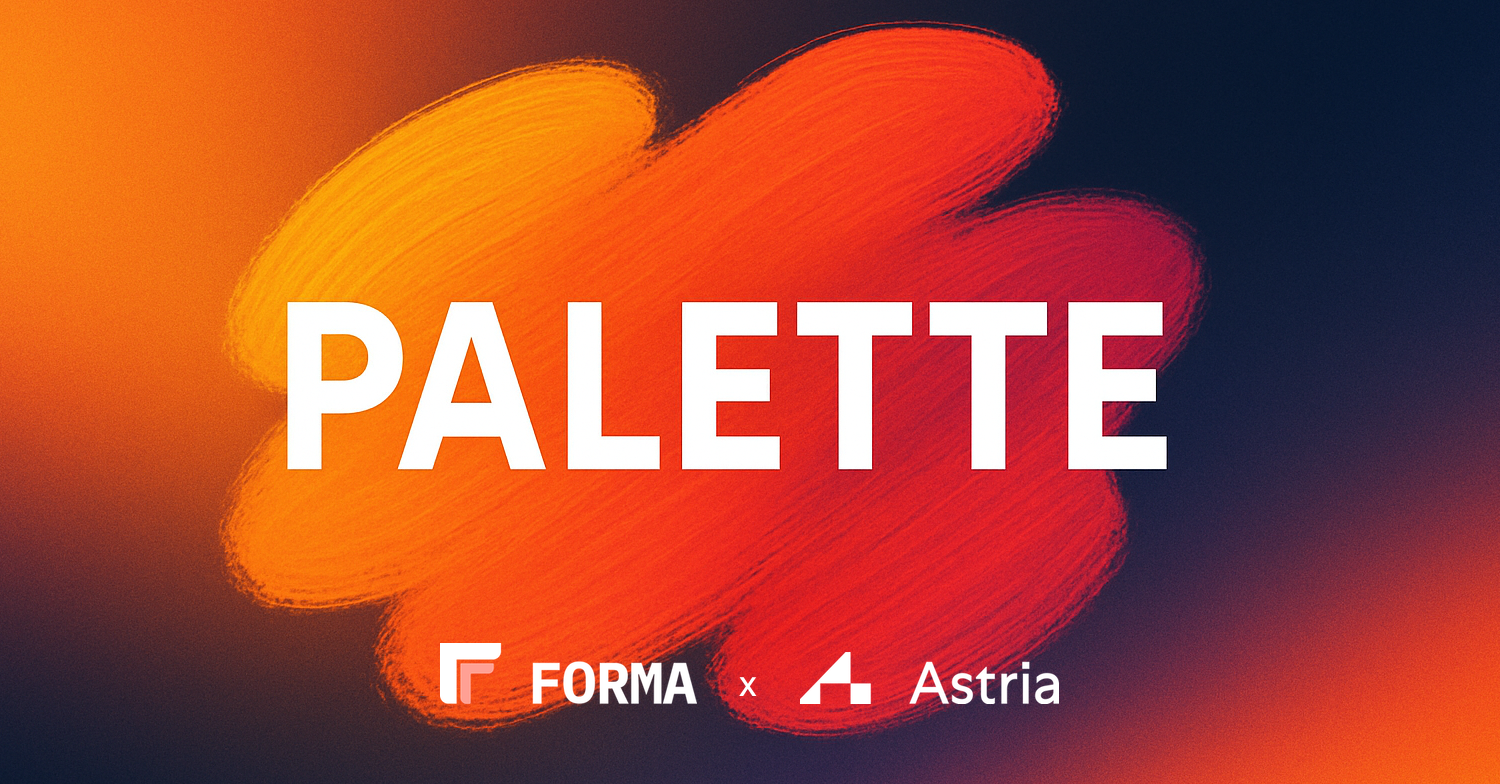Forma Mainnet is migrating to Astria’s Decentralized Sequencer. What You Need to Know

On June 4, 2025, Forma will migrate to Astria's decentralized shared sequencer through the "Palette" hard fork. One year after our mainnet launch (May 28, 2024), this upgrade represents the next major evolution of our infrastructure, strengthening the network's resilience and censorship resistance for creators, collectors, and builders.
Migration Schedule and Impact
Palette Hard Fork Details
- Date: June 4, 2025
- Start Time: ~11:00 AM EDT
- Duration: Up to 4 hours
- Impact: Block production and transaction processing will be temporarily suspended
Block production will resume immediately following the successful completion of the migration. We will provide updates via our official X and Discord channels throughout the process.
The Rationale for Decentralized Sequencing
Forma currently operates on a centralized private sequencer network built on Astria's technology. While our multi-node architecture provides redundancy against hardware failures, it inherently relies on a single organizational trust model: if our infrastructure is compromised, faces external pressure, or experiences organizational failure, the rollup's operation could be disrupted or manipulated.
Astria's mainnet, launched October 25, 2024, addresses these limitations through a decentralized architecture. The network operates on a Proof-of-Authority consensus mechanism managed by independent validators, delivering approximately 2-second block times with single-slot finality.
Why Astria Changes Everything
The technical advantages of migrating to Astria go beyond incremental improvements. When validators are distributed across independent operators, the network achieves something our centralized setup never could: it keeps producing blocks even when multiple nodes fail. It's the difference between partial degradation and complete outage.
More fundamentally, transaction ordering moves from our control to mathematical consensus. We literally cannot censor or reorder transactions, even if we wanted to. This shift from "trust us" to "trust the protocol" matters when you're building infrastructure for valuable creative and cultural works.
Remarkably, we achieve this without sacrificing performance. Users still see ~2 second confirmations with Celestia-backed finality. But now those confirmations come with cryptographic guarantees instead of organizational promises.
Perhaps most importantly, Astria's "lazy sequencing" model preserves our sovereignty. The sequencer handles transaction ordering and data posts to Celestia, but never touches our state execution. We keep our EVM runtime, maintain complete upgrade authority, and could even switch sequencing layers if governance demands it. This isn't vendor lock-in disguised as decentralization, it's genuine architectural flexibility.
Understanding Astria's Role
Astria is a decentralized shared sequencing layer designed specifically for the modular blockchain ecosystem. As a "lazy sequencer," it handles transaction ordering without executing state. This is a crucial distinction that allows multiple rollups to share the same infrastructure without increasing validator requirements.
Key aspects of Astria's design:
- Proof-of-Authority network with 11 validators at launch, including teams from across the Celestia ecosystem
- Provides both sequencing and settlement (bridging) capabilities for rollups
- Chain-agnostic architecture supporting any execution environment
This design philosophy aligns perfectly with Forma's architecture. By separating sequencing from execution, Astria enables us to maintain complete control over our runtime while benefiting from shared, decentralized infrastructure.
What This Enables
For end users, the immediate experience remains seamless. But this migration fundamentally changes what's possible on Forma.
We're no longer constrained by the limitations of centralized infrastructure. Cross-rollup interactions become feasible when multiple chains share the same neutral sequencing layer. Developers can build with confidence knowing that no single entity controls transaction ordering. And perhaps most importantly, we've eliminated the uncomfortable reality of asking users to trust us indefinitely.
These guarantees matter for applications handling real value and real creative works.
The Path Forward
The Palette hard fork represents more than an infrastructure upgrade. It demonstrates our commitment to building genuinely decentralized systems.
We appreciate your patience during the maintenance window as we implement these critical improvements. The temporary disruption enables permanent enhancements to network security, reliability, and sovereignty.
For technical questions or concerns, please reach out to us through Discord. For migration updates, follow our official communications on X.
Thank you for building with us. The best is still ahead.
